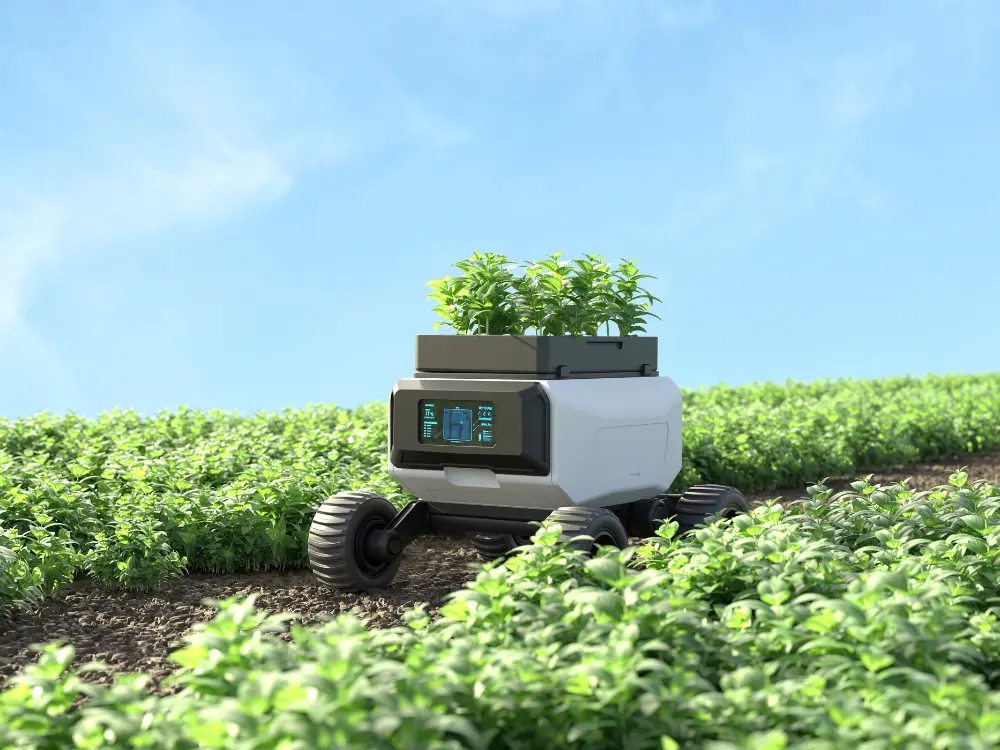Agriculture has always been the backbone of India, providing livelihood to millions of people, especially in rural areas. However, the challenges faced by farmers in recent years—ranging from unpredictable weather patterns to declining soil health—have made farming increasingly difficult. In response to these challenges, technology, particularly Artificial Intelligence (AI), is stepping in as a game-changer. AI is not just a buzzword; it’s actively transforming the way farming is done in rural India, making agriculture more efficient, sustainable, and profitable.
Understanding AI in Agriculture
AI in agriculture involves using machines, software, and algorithms that can analyze data, make predictions, and even learn from past experiences to improve farming outcomes. Unlike traditional methods, which rely heavily on human intuition and experience, AI uses data—lots of it—to make more informed decisions. This data can come from various sources like weather patterns, soil conditions, crop health, and even market prices.
Predicting Weather Patterns
One of the biggest challenges for Indian farmers is the unpredictability of weather. A sudden drought, flood, or untimely rain can ruin crops and lead to financial losses. AI helps by providing accurate weather forecasts, sometimes up to weeks in advance. These predictions are based on analyzing historical weather data and current climate conditions.
For example, AI can predict the likelihood of a monsoon delay, allowing farmers to adjust their sowing schedules accordingly. This not only helps in avoiding crop failure but also maximizes yield. In areas prone to extreme weather, AI can recommend the best crops to plant based on expected conditions, ensuring that farmers don’t lose out due to unexpected climate changes.
Smart Irrigation Systems
Water scarcity is another major issue in Indian agriculture. Traditional irrigation methods often lead to either over-watering or under-watering, both of which can harm crops. AI-powered smart irrigation systems are solving this problem by optimizing water usage.
These systems use sensors placed in the soil to monitor moisture levels in real-time. The data collected by these sensors is then analyzed by AI algorithms to determine the exact amount of water needed by the crops. This information is used to automate irrigation, ensuring that crops receive just the right amount of water at the right time. This not only conserves water but also improves crop health and yields.
Precision Farming
Precision farming is another area where AI is making a significant impact. This approach involves using AI to analyze various factors like soil conditions, crop health, and pest infestations to make precise farming decisions. For example, AI can analyze soil samples to determine nutrient deficiencies and recommend the right type of fertilizer to use. Similarly, AI-powered drones can monitor crops from the sky, identifying areas that are underperforming or are infested with pests.
By enabling farmers to target specific areas of their fields with the right inputs, precision farming reduces waste and increases productivity. This is particularly beneficial for small-scale farmers who need to make the most out of limited resources.
Market Insights and Price Forecasting
For many farmers, getting a fair price for their produce is a constant struggle. Market prices can fluctuate widely, and farmers often have little control over the prices they receive. AI is helping farmers by providing market insights and price forecasting.
By analyzing data from various markets, AI can predict price trends for different crops. This allows farmers to decide when to sell their produce to get the best price. Some AI platforms also connect farmers directly with buyers, eliminating middlemen and ensuring that farmers receive a fair price for their hard work.
Challenges and the Road Ahead
While AI holds great promise for Indian agriculture, it is not without challenges. The biggest hurdle is the lack of digital infrastructure in many rural areas. Many farmers still lack access to smartphones, the internet, and other necessary tools to make use of AI technology. Additionally, there is a need for training and education to help farmers understand and adopt these new technologies. However, the government and various NGOs are working to bridge these gaps by promoting digital literacy and providing affordable technology solutions to farmers. As more farmers gain access to AI-powered tools, the benefits of this technology will become more widespread.
Conclusion
AI is no longer a distant dream; it is actively revolutionizing farming in rural India. From predicting weather patterns to optimizing water usage and providing market insights, AI is helping farmers overcome traditional challenges and improve their livelihoods. While there are still hurdles to overcome, the potential of AI in transforming Indian agriculture is immense. By embracing this technology, India can ensure a more prosperous and sustainable future for its farmers.

